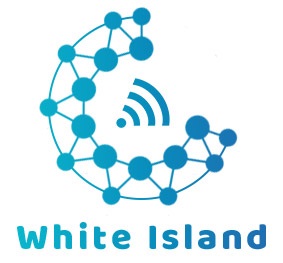In today’s interconnected world, the role of standards in industries like manufacturing, energy, and asset management cannot be overstated. Standards provide frameworks for interoperability, efficiency, and reliability across systems and devices. Among the many standards out there, MIMOSA (Maintenance, Information, Modeling, and Optimization for System Applications) stands as a significant player. But how does MIMOSA compare to other standards? In this article, we’ll break down MIMOSA’s strengths and limitations by comparing it to other standards commonly used in asset management, predictive maintenance, and industrial automation.
- Introduction to MIMOSA and Its Role in Industry Standards
MIMOSA is an open standard primarily used for asset management and predictive maintenance within industries that rely heavily on maintaining complex machinery and infrastructure. It’s a framework that ensures consistency and interoperability in the way data is exchanged between systems. Its primary goal is to optimize operations and maintenance processes by standardizing the data flow across various platforms and devices.
But how does MIMOSA compare to other standards like ISO 55000, OPC-UA, and ISA-95? In the context of asset management, MIMOSA helps unify various data types into a coherent structure, enabling organizations to make more informed decisions based on accurate and real-time information.
- Key Features of MIMOSA Compared to Other Industry Standards
The primary appeal of MIMOSA lies in its emphasis on interoperability and data consistency. MIMOSA is often adopted for its ability to connect different systems and technologies within an organization’s ecosystem. This ensures that data flows smoothly between various maintenance, operations, and engineering systems.
Some of the key features that set MIMOSA apart from other standards include:
- Data Integration: MIMOSA allows data from different sources (sensors, systems, and platforms) to be integrated into a unified framework, making it easier for organizations to analyze and act on that data.
- Flexibility: MIMOSA adapts to various systems, making it suitable for different industries. Unlike other rigid standards, MIMOSA can accommodate diverse technological infrastructures.
- Predictive Maintenance Focus: MIMOSA is deeply embedded in predictive maintenance practices, allowing organizations to detect equipment failure patterns before they occur, which is not always the primary focus of other standards.

- MIMOSA vs. ISO 55000: A Comparison of Asset Management Standards
One of the most notable comparisons is between MIMOSA and ISO 55000, which is an international standard for asset management. While both standards aim to optimize asset management, their approach differs significantly. So, how does MIMOSA compare to other standards like ISO 55000?
- ISO 55000 focuses on providing a strategic framework for managing assets throughout their lifecycle, emphasizing organizational structure, governance, and continuous improvement.
- MIMOSA, on the other hand, is more focused on the technical side of asset management, particularly in integrating various data sources and systems. It’s about making data more actionable, enabling maintenance teams to take proactive steps using predictive insights.
Key Differences:
- Strategic vs. Tactical: ISO 55000 is more focused on the strategic level of asset management, while MIMOSA takes a more tactical approach, dealing with the real-time management of asset data.
- Implementation Focus: ISO 55000’s focus is more on creating long-term frameworks and governance for asset management, while MIMOSA provides tools for integrating data and improving operational efficiency right away.
- MIMOSA and OPC-UA: How Do They Stack Up?
OPC-UA (Open Platform Communications Unified Architecture) is a communication standard that’s widely used for connecting industrial devices and systems. It’s particularly important in the context of automation and industrial IoT (Internet of Things). So, how does MIMOSA compare to other standards like OPC-UA?
- OPC-UA: Its main function is to enable secure and reliable data exchange between devices, control systems, and software applications in industrial environments. It’s more about establishing communication protocols and standards for data flow.
- MIMOSA: Instead of focusing solely on communication protocols, MIMOSA focuses on data management and asset information models, organizing and optimizing the information from the communication systems to help with decision-making, predictive maintenance, and other operations.
MIMOSA vs. OPC-UA:
- Focus: OPC-UA is mainly about ensuring devices and systems can communicate effectively, while MIMOSA helps ensure that the data shared between those devices is actionable and organized.
- Complementary Use: MIMOSA can work in tandem with OPC-UA. While OPC-UA connects and shares the data, MIMOSA ensures that the data is structured in a way that adds value to maintenance, operations, and decision-making processes.
- The Practical Benefits of MIMOSA Over Other Standards
MIMOSA’s unique approach to data integration and asset management offers several practical benefits, especially in industries where equipment reliability is critical. So, how does MIMOSA compare to other standards when it comes to practical benefits?
- Improved Data Flow: MIMOSA standardizes and streamlines the way data is shared across different systems, eliminating silos and enabling better coordination between teams.
- Better Predictive Maintenance: With MIMOSA, organizations can more easily implement predictive maintenance strategies, reducing downtime and improving asset lifespan.
- Enhanced Interoperability: MIMOSA enables various systems to work together more seamlessly, which can be particularly beneficial in complex industrial settings.
- Faster Decision-Making: By providing a structured framework for data, MIMOSA allows managers to make more informed and timely decisions based on reliable, actionable insights.
Q&A Section:
Q: What industries benefit most from MIMOSA standards?
A: MIMOSA is particularly beneficial in industries like manufacturing, energy, utilities, and transportation, where equipment uptime and predictive maintenance are critical.
Q: Can MIMOSA integrate with other existing standards in an organization’s ecosystem?
A: Yes, MIMOSA can complement other standards like OPC-UA and ISO 55000, allowing organizations to leverage the strengths of each to optimize operations.
Q: What are the limitations of MIMOSA compared to other standards?
A: While MIMOSA excels in data integration and predictive maintenance, it might not offer the same level of strategic guidance as ISO 55000 in asset governance and organizational processes.
Q: Is MIMOSA suitable for small-scale operations, or is it more geared toward large enterprises?
A: While MIMOSA is often used in large enterprises due to its complexity and scope, its flexible nature means it can also be adapted for smaller operations that need better data management and predictive maintenance capabilities.
Conclusion:
So, how does MIMOSA compare to other standards? MIMOSA stands out for its strong focus on data integration, predictive maintenance, and asset management, making it an invaluable tool in industries where equipment reliability and operational efficiency are critical. While it may not offer the same strategic guidance as standards like ISO 55000, its technical strengths in data interoperability and predictive maintenance make it a key player in optimizing asset performance.
Visit us at wizland.



